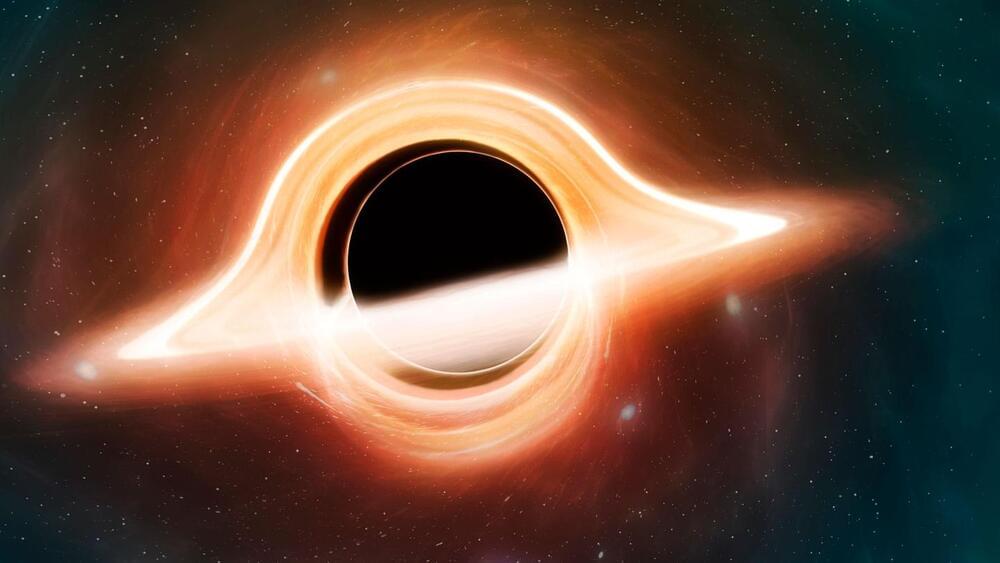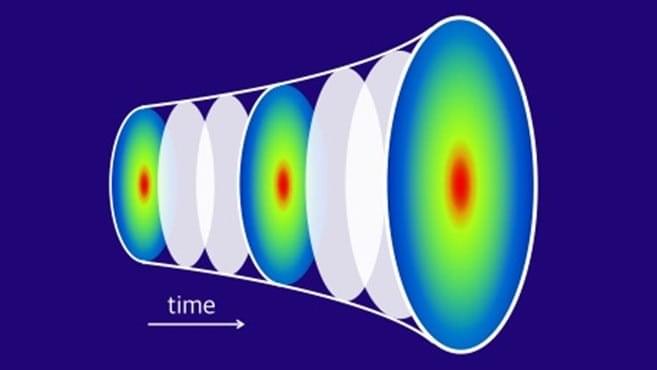Philosophy and theology are filled with far more questions than universally compelling answers and evidence.



Just a couple of years earlier, in 1963, New Zealand mathematician Roy Kerr found a solution to Einstein’s equation for a rotating black hole. This was a “game changer for black holes,” Giorgi noted in a public lecture given at the virtual 2022 International Congress of Mathematicians. Rotating black holes were much more realistic astrophysical objects than the non-spinning black holes that Karl Schwarzschild had solved the equations for.
“Physicists really had believed for decades that the black hole region was an artifact of symmetry that was appearing in the mathematical construction of this object but not in the real world,” Giorgi said in the talk. Kerr’s solution helped establish the existence of black holes.
In a nearly 1,000-page paper, Giorgi and colleagues used a type of “proof by contradiction” to show that Kerr black holes that rotate slowly (meaning they have a small angular momentum relative to their mass) are mathematically stable. The technique entails assuming the opposite of the statement to be proved, then discovering an inconsistency. That shows that the assumption is false. The work is currently undergoing peer review. “It’s a long paper, so it’s going to take some time,” Giorgi says.

Argentinian-born mathematician Luis Caffarelli has won the 2023 Abel Prize — one of the most coveted awards in mathematics — for his work on equations that are important for describing physical phenomena, such as how ice melts and fluids flow. He is the first person born in South America to win the award.
Caffarelli’s results “are technically virtuous, covering many different areas of mathematics and its applications”, says a statement by Helge Holden, a mathematician at the Norwegian University of Science and Technology in Trondheim who chairs the Abel Committee.
The winner says receiving the news was an emotional moment, because “it shows that people have some appreciation for me and for my science”.

If you go running over a trail in the woods or a grassy field, there are countless bumps and dips in the terrain, each with the potential to trip you up. But typically, runners manage just fine. It’s a remarkable physical feat that we tend to take for granted. A team of researchers set out to better understand it.
With a specially made running track and mathematical modeling, the lab of Madhusudhan Venkadesan found that when running on uneven terrain, humans mostly rely on the body’s mechanical response for stability rather than consciously plot out their footsteps to find level ground. Further, they found that the runners were just as efficient in their movements and physical exertion as when running on flat ground. The results are published in eLife.
Even without occasional hazards like steep drops, runners must contend with gentler, but still uneven, ground that can be destabilizing. So why aren’t trails typically littered with toppled runners? One possibility is that visual cues allow runners to carefully observe the land to step on mostly level areas. On the other hand, running played a huge role in human evolution, particularly in how it benefited humans in hunting. That means sight cannot be devoted solely to find areas to step on; it’s also needed to watch out for the prey, trees or other obstacles to avoid, and decide which path to take.

Unfortunately for the field of cosmology, there is only one universe. This makes performing experiments in the same way as other scientific fields quite a challenge. But it turns out that the universe and the quantum fields that permeate it are highly analogous to quantum fluids like Bose-Einstein condensates (BECs), at least from a mathematical point of view. These fluids can be the subject of experiments, allowing cosmology to be studied in the lab.
\r \r.
In a paper published in Nature, researchers at Heidelberg University in Germany have for the first time used a BEC to simulate an expanding universe and certain quantum fields within it. This allows for the study of important cosmological scenarios. Not only is the universe currently expanding, but it is believed that in the first fractions of a second after the Big Bang it underwent a period of extremely rapid expansion known as “inflation.” This process would have expanded the microscopic fluctuations of quantum fields in the early universe to the size of galaxy clusters, seeding the large-scale structure of our universe today.

One of the oldest tools in computational physics — a 200-year-old mathematical technique known as Fourier analysis — can reveal crucial information about how a form of artificial intelligence called a deep neural network learns to perform tasks involving complex physics like climate and turbulence modeling, according to a new study.
The discovery by mechanical engineering researchers at Rice University is described in an open-access study published in the journal PNAS Nexus, a sister publication of the Proceedings of the National Academy of Sciences.
“This is the first rigorous framework to explain and guide the use of deep neural networks for complex dynamical systems such as climate,” said study corresponding author Pedram Hassanzadeh. “It could substantially accelerate the use of scientific deep learning in climate science, and lead to much more reliable climate change projections.”

😲
In 1997, IBM’s Deep Blue defeated the reigning world champion chess player, Garry Kasparov. In 2016, Google’s AlphaGo defeated one of the worlds top Go players in a five-game match. Today, OpenAI released GPT-4, which it claims beats 90% of humans who take the bar to become a lawyer, and 99% of students who compete in the Biology Olympiad, an international competition that tests the knowledge and skills of high school students in the field of biology.
In fact, it scores in the top ranks for at least 34 different tests of ability in fields as diverse as macroeconomics, writing, math, and — yes — vinology.
“GPT-4 exhibits human-level performance on the majority of these professional and academic exams,” says OpenAI.
At the end of of 2022, we released a film offering a reply to the fine tuning argument for God from leading physicists and philosophers of physics. This included both those that doubt there is any fine tuning and those that think there is but it can be solved by naturalistic means.
Subsequently astrophysicist Luke Barnes and philosopher Philip Goff offered their criticism of our criticism. Here we have assembled some of our original talking heads to review their criticism and offer a reply, defending the original position that fine tuning argument for God does not work.
Our original film can be found here: https://www.youtube.com/watch?v=jJ-fj3lqJ6M
Luke Barnes and Philip Goff’s reply is here: https://www.youtube.com/watch?v=QJYWkqOzUQ0&t=4036s and we also recommend this video on Bayes theorem on the Majesty of Reason Channel: https://www.youtube.com/watch?v=o1MdtyLL3Uw&t=4423s.
Our panel consists of Graham Priest, Distinguished Professor of Philosophy at The Graduate Center, City University of New York, well known for his work in logic especially non classical logic, the philosophy of mathematics and science and Buddhist philosophy.
Barry Loewer, who is the distinguished professor of philosophy at Rutgers University and director of the Rutgers Center for Philosophy and the Sciences. Barry specialises in philosophy of science and philosophical logic and the foundations of quantum mechanics, statical mechanics and probability.
Dan Linford who is one of the rising stars in the intersection of the philosophy of physics and philosophy of religion. He did his Phd in philosophy, under Paul Draper and had well known atheist cosmologist Sean Carroll and theistic fine tuning advocate Rob Collins on his thesis committee. He’s now doing a postdoc at the University of Nebraska and recently authored the book Existential Inertia and Classical Theistic Proofs with Joe Schmidt.
Niayesh Afshordi who is an astrophysicist and cosmologist, he’s Professor at the University fo Waterloo and faculty at the Permitter Institute for Theoretical physics. Niayesh won the silver medal at the world physics Olympiad as a teenager, won 1st prize the The Buchalter Cosmology Prize and works in a variety of fields from early universe cosmology, black holes, dark energy and quantum gravity.

For their new study, the researchers aimed to understand how quantum correlations inside a source material, be it a gas or a mineral, would impact the quantum properties of the light bursts coming out, if at all. “High harmonic generation is a very important area. And still, until recently, it was described by a classical picture of light,” Kaminer says.
In quantum mechanics, figuring out what’s going on with more than a few particles at the same time is notoriously difficult. Kaminer and Alexey Gorlach, a graduate student in his lab, used their COVID-imposed isolation to try to make progress on a fully quantum description of light emitted in high harmonics. “It’s really crazy; Alexey built a super complex mathematical description on a scale that we’ve never had before,” Kaminer says.
Next, to fully incorporate the quantum properties of the material used to generate this light, Kaminer and Gorlach teamed up with Andrea Pizzi, then a graduate student at the University of Cambridge and now a postdoctoral fellow at Harvard University.
Mathematical research from the University of Bath in the United Kingdom has shed new light on the formation and behavior of crowds.
Have you ever pondered how people, without having a discussion or even giving it a second thought, instinctively form lanes when walking through a crowded area?
A new theory, developed by mathematicians at the University of Bath in the UK and led by Professor Tim Rogers, explains this phenomenon. This theory is able to predict when lanes will be straight but also when they will be curved.